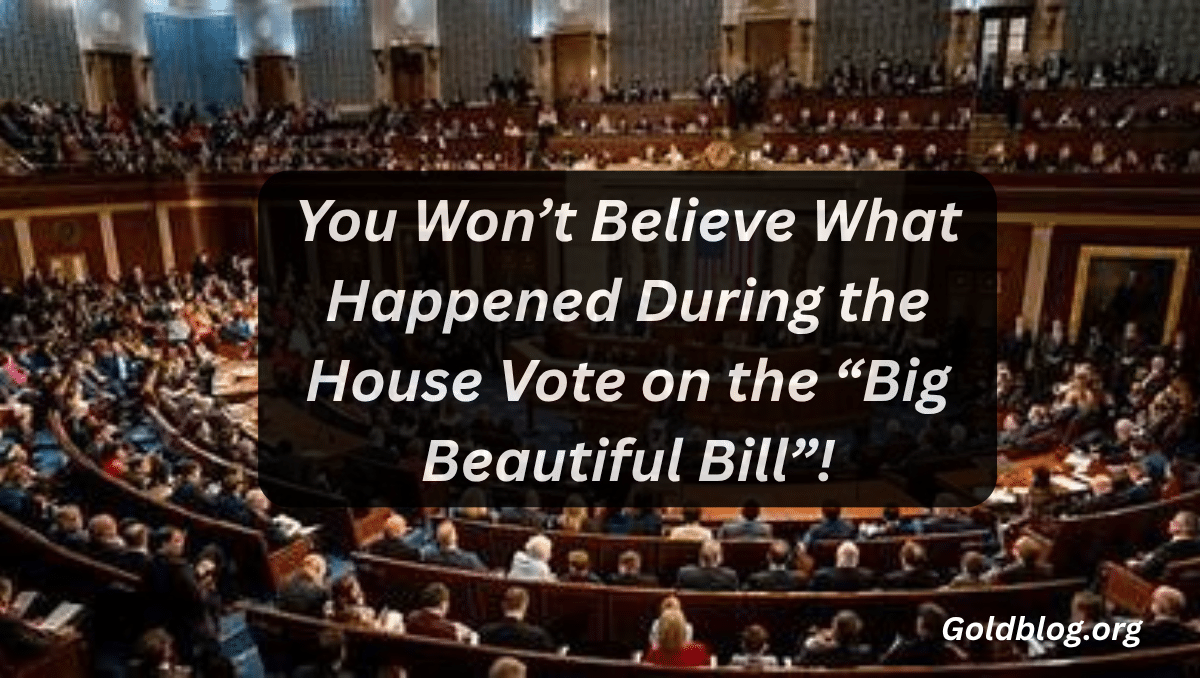When the U.S. House of Representatives convened for the live house vote on the so-called “Big Beautiful Bill” early Wednesday morning, the chamber was electric. From the moment Speaker’s gavel hit the desk to the instant the final tally was announced, members from both sides of the aisle exchanged fiery remarks, dramatic procedural maneuvers, and impassioned floor speeches—each hoping to sway just a handful of votes to their side. But did the House pass the Big Beautiful Bill? The answer stunned even longtime Capitol observers.
A Quick Summary of the “Big Beautiful Bill“
At its core, the Big Beautiful Bill was a sweeping budget bill that aimed to fund a series of social programs over the next decade. The proposal included modest big beautiful bill tax cuts for middle-class families, paired with targeted medicaid cuts in Big Beautiful Bill that would trim benefits for higher-income brackets. Lawmakers touting the plan argued it would cut the deficit by an estimated $500 billion, while boosting infrastructure spending and raising the federal minimum wage. Opponents, however, decried it as fiscal recklessness—claiming it traded one handout for another under the guise of bipartisanship.
How Many Votes to Pass a Bill in the House?
Under House rules, the Big Beautiful Bill needed at least 218 affirmative votes to pass. With all 435 representatives present and voting, that threshold stood firm. Throughout the debate, members repeatedly asked on C-SPAN and CSPAN coverage, “How many votes to pass a bill in the House?”—a question that underscored the razor-thin margins that make or break major legislation.
Key Moments of the “BBB” House Vote
As the clerk began calling names, viewers at home and on house vote live feeds saw surprising cross-party alignments. Representative Victoria Spartz, R-IN, known for her fiscally conservative stance, shocked many by voicing tentative support—citing the bill’s infrastructure provisions as a win for her district. Yet, even her vote could not guarantee passage. At one point, chants of “no more games” echoed through the aisles when procedural wrangling delayed the vote count, forcing House leadership to appeal to the Parliamentarian for a ruling.
Did the Big Beautiful Bill Pass the House?
When the final roll call was complete, the clerk announced 216 “yeas” and 219 “nays.” The Big Beautiful Bill failed to pass the House by a margin of just three votes. Immediately, questions swirled: “Did the bill pass the House?” and “Did the Big Beautiful Bill pass the House?” The answer was an emphatic no—despite hours of debate, intense lobbying, and a globally watched live House vote.
Which Republicans Voted Against the Big Beautiful Bill?
Most Republicans stood united against the package, arguing it contained too many spending increases. Notably, nearly all members of the conservative Freedom Caucus cast “no” votes. A handful of moderate Republicans, however, surprised colleagues by crossing the aisle—an action that still wasn’t enough to tip the scales. The result: the House’s majority coalition collapsed, leaving Speaker leadership scrambling to regroup.
What Comes Next in Congress?
With the Big Beautiful Bill vote behind them, lawmakers must decide whether to revisit the measure in a revised form or abandon it altogether. Could a slimmer version of the house bill find traction? Will Senate counterparts pick up the pieces, or will this represent the end of the BBB House vote saga? Talks are already underway in private, and a revised bill could surface as early as next month.
Behind the Headlines: Why It Mattered
The outcome of this high-stakes house bill vote was more than a simple tally—it was a referendum on Congress’s appetite for compromise. As constituents tuned into C-SPAN, CSPAN, and social media live updates, the narrow defeat underscored the deep partisan divides still roiling Capitol Hill. For many, the question “has the Big Beautiful Bill passed?” became shorthand for broader frustration with gridlock.
Final Takeaway
Though the Big Beautiful Bill vote fell short, the drama of the live House voting on the Big Beautiful Bill—full of budget bill dreams, deficit concerns, and last-minute intrigue—will linger in political lore. In the end, the U.S. House of Representatives delivered a stunning reminder: in today’s Congress, even the slightest shift in votes can make or break a landmark measure. Whether this bill will return in a new form, or serve as a cautionary tale of overreach, remains to be seen—but one thing is certain: Americans everywhere will be watching the next budget battle with bated breath.
